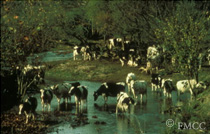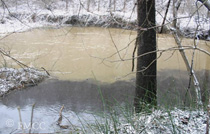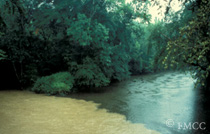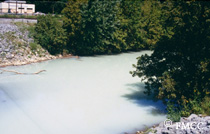Contaminants continue to cause mussel die-offs and dead-zones in rivers once considered safe-havens for this imperiled faunal group. Numerous land use activities now common in river watersheds can add sediments and contaminants to these systems, which then act as sources of stress to mussels. Common land uses include urban, industrial, commercial, and residential development; livestock production; agricultural cropping; coal mining; road and railroad networks; and forestry. Other sources of stress include point source discharges from wastewater treatment and industrial facilities, stream bank and channel erosion, domestic livestock activity within stream channels, and atmospheric deposition of pollutants such as nitrates and mercury.
The scientific discipline of aquatic toxicology addresses how contaminants affect the water quality and habitat that mussels rely on to maintain viable populations. The FMCC produces mussels for use in collaborative studies with other institutions and conducts studies to examine chronic sub-lethal affects to mussel growth, reproduction and their organ tissues (see Histopathology). Our studies typically involve in situ field projects and laboratory based long-term (>2-3 months) chemical exposures to hatchery raised mussels. Mussels are held in recirculating water systems, including mesocosm streams that mimic natural river environments, to examine how potential contaminants might affect their health and condition.

Agricultural contamination from livestock

Coal slurry water entering a stream

Suspended sediments from cropland

Toxic Spill
